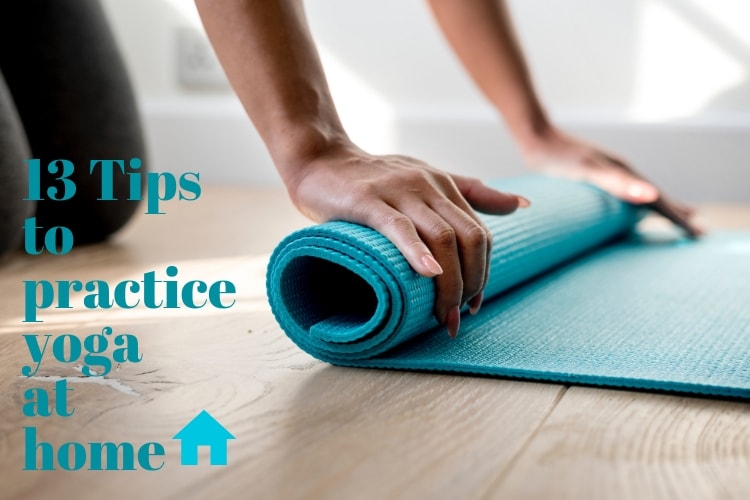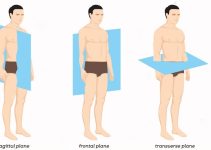
Starting a new habit and establishing it for longer duration in a disciplinary way is always been a challenging task. Yoga is also a disciplinary practice. For daily yoga practice at home, it demands a lot in the beginning if you don’t go through strategic planning.
One can’t deny the initial challenges in yoga along with How beneficial it is. There can be endless constraints in your daily yoga practice at home. Once you get over these initial constraints, you are ready for doing yoga on-the-go & enjoy the beauty of yoga.
Follow these tips for daily yoga practice at home to establish a regular habit of yoga & get over from endless reason to squeeze yoga out of your day.
1. Prepare A Practice Guide
Before you go onto the mat start practicing different yoga poses, prepare a practice guide containing its benefits & research different styles of yoga. This helps you to develop curiosity about yoga and this curiosity is the key to knowledge. Further, this knowledge helps you to understand deepen aspects of body, mind, and soul in yoga. Start summarizing this knowledge into practice guidelines.
This practice guide for a daily yoga practice at home could also consist of details of timing & space for yoga practice, common props needed (yoga mat, blocks, etc.), general queries & different terms used in yoga. keep this practice guide alongside and with time fill your queries with the help of classes or an expert teacher.
2. Schedule the routine
Yoga is a disciplinary set of physical, mental, and spiritual practices, and to take full benefits out of it, you need to be time punctual. Schedule timing of your daily yoga practice at home according to your routine & follow it from the beginning.
Following the specific schedule is the part of yoga practice which is called Yama and Niyama (Eight limbs of yoga).3. Find a comfortable space
Space you are practicing on can affect your yoga practice at a very extent.
It is always a great option if you can devote a separate room for your yoga practice at home where you can put necessarily props altogether.
On the other hand, if you running out of rooms, still you can use a small space in your room corner for yoga practice. The average length & width of the yoga mat is respectively 68 & 24 inches. So it doesn’t demand much space for comfortably practicing any yoga asana.Wall or some supporting structure near your yoga mat can help a beginner as a prop in many balancing poses. Adding fragrance candles and dim light in your practice area can create a helpful atmosphere for meditation.
4. Attend morning nature’s call
Morning time manifest nature’s peace and beauty. Try to perform your daily yoga practice at home in the morning atmosphere as it is twice as effective as any other time. A well-rested body after a calm sleep in night responds better to yoga.
when external silence of nature matches the inner silence of yours, then you able to know the better you – This is what yoga means.
5. Practice on an empty stomach
Yoga is part of your body. Before yoga practice, make sure your stomach is empty because excreta in it is not part of your body. A full stomach needed energy for the digestion process. This energy should be concentrated on one point When you practice Yoga.
It is considered ideal to practice your daily yoga at home after 4 hours of a heavy meal and 3 hours of a normal meal.
Another reason for an empty stomach is that different yoga asana comprises bends and twist of the body. These bends and twist can produce various complications in the gastrointestinal tract (can cause gas during practice).
6. Cut out from distraction during practice
Mobiles phones could be the biggest obstacle while practicing yoga at home.
I love the rules of certain yoga classes, they don’t allow you to bring phones in the class. But at home, mobiles are always there by your side.Try not to check out notifications and messages while practicing your daily yoga at home. This can consume the quality time of yoga practice. Figure out the time when there no clamor around you.
7. Start and end your practice with a mantra Chanting
Mantras are commonly found in the Sanskrit language.
Chanting a mantra creates vibrations in the body and remove unwanted thoughts from the mind. ‘OM’ is the simplest mantra you can chant at the beginning and end of your daily yoga practice at home to feel the peace within you.8. Warm-up the body with initial stretches
The physical aspect of yoga sometimes consists of vigorous Asana. your body muscles should not be in the relaxed state before performing these vigorous asanas. Initial stretches let increase muscles temperature and so on the mobility of joint-muscles increases.
9. Don’t practice it forcefully
Remember this basic key of Yoga every time you practice yoga Asana – “something which happens effortlessly and steadiness is the practice of yoga Asana.” There is no place for applying force at any stage of yoga practice.
There is a phrase “if you have to force it. Leave it” same apply in Yoga. If you are doing it forcefully, you probably not doing Yoga.
10. Control and focus on breathing
The existence of life supports on breath (Vital force). Breathing let oxygen come into the Lungs. Oxygen needs for the proper working of mind and body change according to the action we perform. A heavy exercise produce faster breathing i.e. excessive oxygen (energy) while in relax situation oxygen requires is lower and thus breathing becomes deep and relaxed.
Yoga is not an exercise which produces heavy breathing but it’s a stage of consciousness where you can focus and control on your deep breathing.
When we focus on breath, medulla oblongata (lowest part of the brain and which control breathing activities) start losing its right over breath. Now cerebral cortex controls the breath which in turn improves memory, attention and perception ability.
11. Make it slow and simple
Perform yoga asana in slow and steady steps. performing asana quickly will engage your mind to come into the final step of asana & hence you less likely to learn the purpose of asana.
Moving slowly in yoga asana practice increases focusing on the power of the mind and prevent any kind of Yoga injuries.
12. End practice with relaxation on Savasana
As initial stretches warm up the body in the same way Savasana (Corpse pose) cool down the body.
At the end of your daily yoga practice at home lay down on savasana on the mat to relax your muscles and let the effect of practice spared over the whole body.13. Bath…before or after Yoga?
As bath cleans outer body the same way Yoga practice cleans the internal organs of the body. So, it should be necessary to maintain a balance between the internal wash (Yoga) and external wash (bath) of the body.
You shouldn’t take shower just after yoga practice…why?Yoga practice generates a lot of heat in your body. Sometimes you can feel this heat as sweating and been little red ears (in patangasana). This heat is generated because of your stimulated Prana.
After Yoga practice, this heat energy should be cool down in a slow and steady manner So that it will not neutralize your stimulated Prana (Breath). If you bath just after yoga practice, it will become the same thing like pouring water on a red-hot metal.




